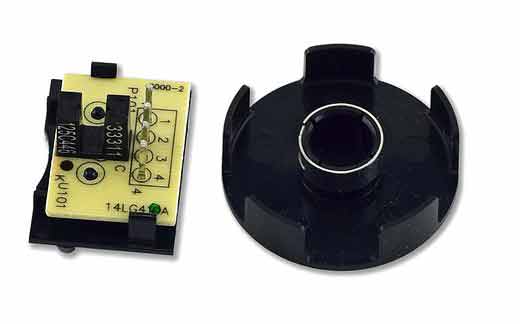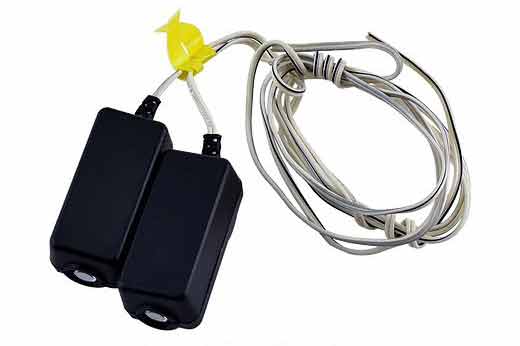The U.S. Consumer Product Safety Commission (CPSC) documented 62 deaths and 49 injuries to children under 15 years of age between March 1982 and November 1996. These incidents and other cases of children trapped under closing garage doors prompted the CPSC and UL to establish the UL 325 safety standard for garage doors and openers. The UL 325 standard was first introduced by Underwriters Laboratories (UL) in March 1982 to help mitigate accidents, injuries, and risks associated with garage doors, gates, and barrier operators by outlining specific requirements.
UL 325 Requirements
The safety requirements for overhead garage doors encompass a broad set of criteria, as outlined below:
1. Inherent Entrapment Protection
Inherent or primary entrapment protection is a safety feature that is built directly into the garage door opener or gate operator. This feature is designed to detect changes in resistance or force to prevent entrapment or injury.

Garage door openers and gate operators use force-sensing or current-sensing technology to measure resistance or force. When these sensors detect an excessive force during operation, they will trigger the opener or operator to stop or reverse its operation.
2. Secondary Entrapment Protection
Secondary entrapment protection is an additional safety measure designed to protect individuals and property by preventing entrapment or injury. This feature serves as a backup or secondary layer of safety in case the primary entrapment protection mechanism fails.

Secondary entrapment protection commonly takes the form of photoelectric eyes or safety eyes, which emit a beam of light (electromagnetic radiation) across the garage door’s path and are designed to detect obstructions while the door closes. When an object obstructs the sensor’s EMR light path, the door opener should reverse its closing cycle as the system detects an obstruction.
3. Manual Release
The manual release is a built-in feature found in electric garage door openers. It allows users to disengage the door from the opener and manually open or close their garage doors when the garage door opener is malfunctioning or in the event of a power outage.
4. Unattended Operation
Unattended operation in an automated garage door system refers to its ability to function without direct supervision or continuous manual control. For example, wireless technologies such as remotes, keypads, and mobile apps should not allow users to ‘force close’ the garage door when the door is obstructed. Unattended operation of garage door openers through internet-connected devices includes visual and audible alarms to alert people nearby when the garage door closes.
5. Travel Speed of Residential Garage Doors
The travel speed of the garage door should not exceed six inches per second during its opening or closing. This standard also applies to one-piece (swing-up) overhead garage doors.
6. Garage Door Battery Backup
This regulation applies exclusively to California residents and is not included in UL 325 requirements. California garage door law mandates that all residential garage door openers being replaced or newly installed must be equipped with their own backup battery. This requirement was established in response to the October 2017 wildfires.
7. Protection Against Fire and Electric Shock
Electric garage doors must be equipped with an electronic or solid-state circuit to minimize the risk of electric shock and detect overheating or excessive current. This circuit is designed to shut down the garage door opener to reduce the risk of fire.
UL 325 Evolution
Here’s how UL 325 standards have impacted garage door safety over the past few decades:
- From March 1982 to October 1992, young children under the age of 15 experienced an average of 8 serious injuries or deaths each year due to garage doors failing to stop closing or reverse.
- From 1989 to 1991, DASMA (Door Operator and Remote Controls Manufacturers Association) collaborated with UL and various safety organizations to address garage door-related fatalities and injuries, leading to the implementation and proposal of new safety regulations and technology requirements.
- In 1990, US President George H.W. Bush signed into law the Consumer Product Safety Improvement Act of 1990 (Public Law 101-608). The legislation mandated that all garage door openers manufactured after 1993 must comply with the entrapment protection safety standard outlined in UL 325 at the time.
- On December 31, 1991, the third edition of UL 325 was published, promoting the use of photo-electric eyes and edge sensors as entrapment-protection devices.
- In 1992, the U.S. Consumer Product Safety Commission mandated that all residential garage door openers manufactured or sold in the United States must be equipped with entrapment-protection devices, including photo-electric eyes.
- In 2016-2017, UL revised the entrapment protection requirements, which included testing methods for entrapment-protection circuits and other functions aimed at mitigating the risk of fire, electric shock, and injury. They also included new requirements for unattended operation and activation of garage door openers through internet-connected devices.
- On July 1, 2019, California lawmakers passed Senate Bill 969, mandating that all garage door openers sold and installed in California must be equipped with a battery backup system. The battery backup requirement is not part of UL 325.
UL 325 standards has significantly enhanced the safety of garage doors from their inception to recent revisions. The combined efforts of organizations like DASMA, governmental actions, and advancements in technology have transformed garage doors into much safer household devices, drastically reducing injuries and fatalities.
How to Ensure That Garage Doors Comply with UL 325?
Overhead door systems and electric openers that adhere to UL 325 requirements typically bear the UL 325 mark. If your garage door opener was manufactured before 1993, it’s likely not compliant and poses a safety hazard. You can also confirm with your garage door repair company or door manufacturer whether your garage door adheres to UL 325 standards.








We never inspected our garage doors and they are 10+ year old. Maybe I should have a professional take a look at it, making sure that a garage door is safe and up to all safety regulations!
I need to have my garage door repaired ASAP. Having a professional taking care of the issue for me would differently be beneficial! They would be able to ensure that it’s fixed up without the risk of things breaking or causing damage to my property.